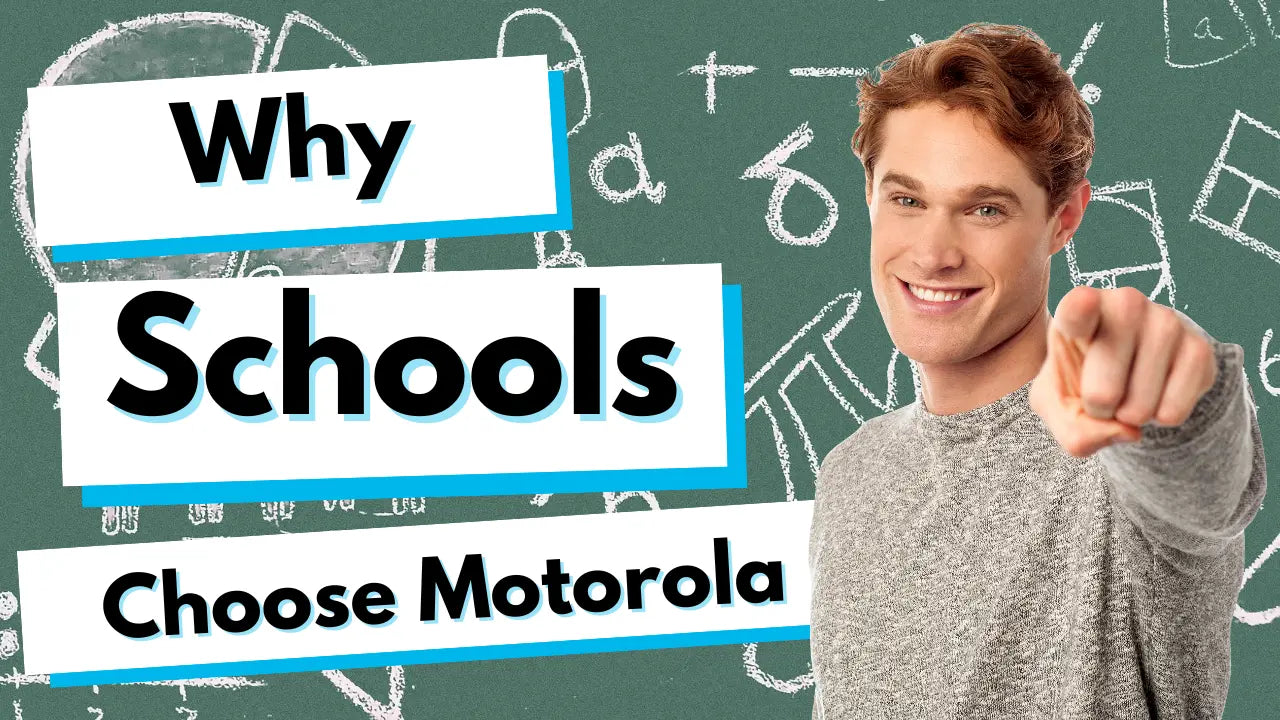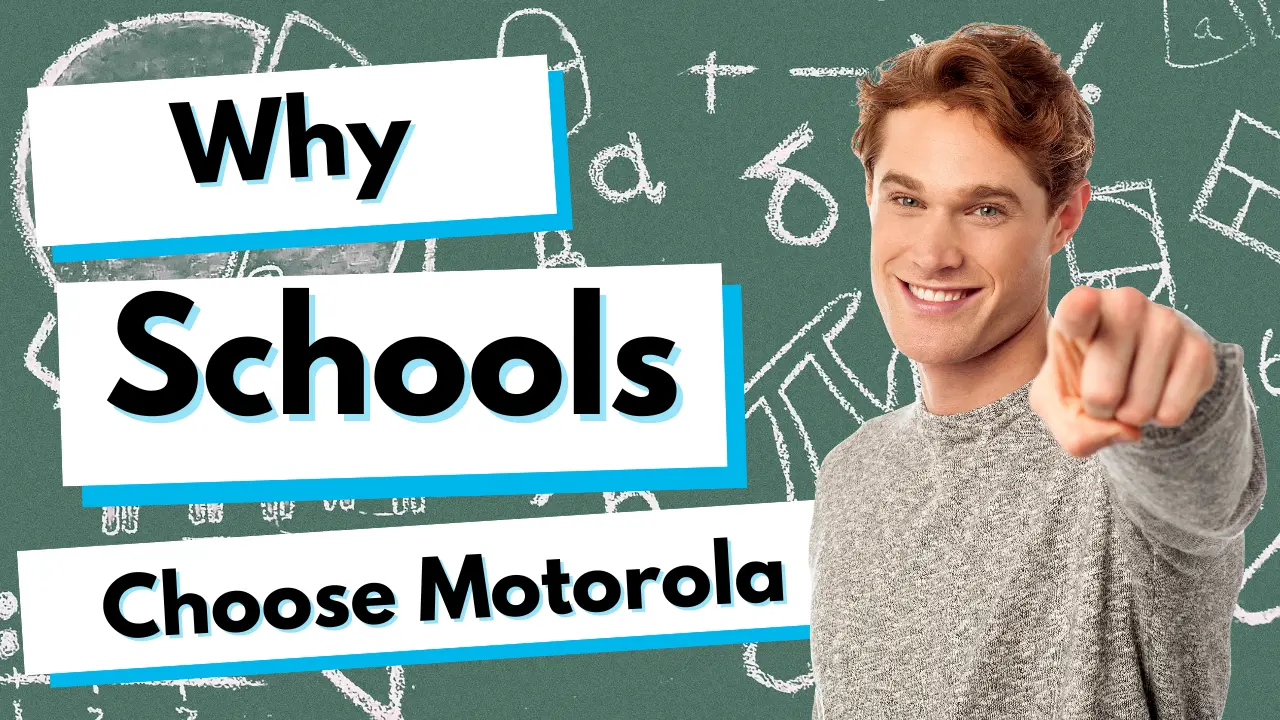Communication is a crucial component in managing any educational institution effectively. Schools across the globe are turning to Motorola 2 Way Radios as their communication tool of choice. Let’s explore why this technology is gaining popularity in educational settings.
1. Enhanced Security Measures
In today’s educational environment, ensuring student safety is of paramount importance. Motorola 2 Way Radios offer a significant security advantage. The ability to instantly communicate during emergencies ensures a swift response, enhancing overall security on campus. This instant communication capability is vital when coordinating between various security personnel, teachers, and administration staff. Whether it’s alerting about a suspicious individual or managing a medical emergency, quick communication can mean the difference between safety and chaos. These radios also integrate with existing school security systems, expanding their utility further. With a robust and reliable communication network, school safety measures become more efficient and effective, providing peace of mind to parents, students, and staff alike.
2. Cost-Effective Communication
Budget constraints are a reality for educational institutions, pushing administrators to find cost-effective solutions for every aspect of school operations. Motorola 2 Way Radios provide a budget-friendly communication solution, eliminating the need for costly mobile phone contracts or data plans. Schools avoid the additional expense of monthly fees, which can be substantial, depending on the number of staff members involved. Furthermore, by utilizing existing infrastructure, schools can significantly reduce operating costs while ensuring efficient communication channels remain open. By minimizing recurring costs while delivering lasting functionality, Motorola radios present a financial advantage that is hard to ignore.
3. Ease of Use for All Age Groups
Technology in schools must be intuitive to ensure widespread adoption. The simple design of Motorola 2 Way Radios makes them accessible to both students and staff, ensuring effective communication across various age groups. With straightforward push-to-talk functionality, users can quickly learn and make use of these devices with minimal training. This ease of use is crucial in schools where staff turnover can be high or when distributing to younger users such as students in leadership roles or emergency drills. The intuitive design reduces the barriers to effective communication, enabling everyone on campus to stay connected with minimal technical difficulties, streamlining daily operations.
4. Durability in Various Environments
Schools require equipment that can endure the wear and tear of everyday use. Built to withstand drops and harsh conditions, Motorola 2 Way Radios are perfect for both indoor and outdoor school activities. Their rugged construction means they continue functioning even after frequent use in the chaotic environment of school, be it the rough-and-tumble of playground supervision or after-school sports events. Furthermore, these radios come equipped to handle various environmental conditions, including rain, dust, and extreme temperatures, ensuring uninterrupted service regardless of the setting. Their resilience under such diverse circumstances makes them an ideal choice for schools looking to maintain continuous communication irrespective of the situational demands.
5. Instant Connectivity
The immediacy of response facilitated by instant communication can not be overstated. Motorola 2 Way Radios offer teachers and staff the ability to communicate instantly, bypassing the delays associated with dialing numbers or dealing with weak cellular signals. This speed in communication is not only beneficial for emergencies but also plays a crucial role in the smooth running of day-to-day school operations—whether it’s a teacher needing assistance in the classroom or administrators needing to relay important messages across the campus quickly. Instant connection helps in maintaining a steady flow of communication among staff, reinforcing an efficient and effective operational environment in educational institutions.
6. Centralized Coordination for Events
Coordinating school events, such as sports days, parent-teacher meetings, or extracurricular activities, requires seamless collaboration among various departments. Motorola 2 Way Radios enable real-time communication, ensuring all staff members are connected and able to respond to dynamic situations quickly. The centralized communication allows event coordinators to manage logistics smoothly, mitigate potential issues before they escalate, and ensure participant safety. By enabling instantaneous updates and notifications, these radios facilitate a streamlined operation, making events more organized and enjoyable for everyone involved. Additionally, the ability to broadcast information to all units simultaneously allows for efficient dissemination of updates and announcements.
The enhanced coordination during school events made possible by Motorola radios not only improves the logistical side of events but also contributes to a more enjoyable experience for attendees. Parents and guests will notice and appreciate the professionalism and seamless operation, reflecting positively on the school’s reputation. By utilizing advanced communication tools, schools will find themselves better positioned to host events that are well-managed and impeccably executed.
7. Long Battery Life
One of the major concerns with personal communication devices is the frequency of charging required, which can lead to potential communication blackouts if not properly maintained. Motorola 2 Way Radios address this issue by boasting long-lasting battery life, making them reliable for all-day use without the need for frequent recharges. This extended battery capability is especially important for schools, where teachers and staff members may not have the time to recharge devices throughout the busy school day. With Motorola radios, users can focus on their educational and administrative tasks without worrying about losing their communication link due to battery depletion, ensuring ongoing connectivity and security.
8. Customizable Channels
Effective communication often requires organized channels, especially within complex environments such as schools. Motorola 2 Way Radios allow schools to set up specific channels for different departments or activities, thereby reducing interference and increasing efficiency. Different teams such as administration, security, and maintenance can be allocated their own dedicated frequencies, avoiding cross-talk and ensuring that messages reach only their intended audiences. This high level of customization also facilitates better coordination during school events, emergency responses, and routine day-to-day operations, allowing the organization to function cohesively and efficiently. It contributes substantially to an environment of controlled and directed communication, indispensable to maintaining order in dynamically evolving situations.
9. Supports Large Campus Coverage
Schools with expansive campuses require reliable communication tools that can provide extensive coverage. Motorola radios stand out in this regard, offering excellent coverage over large areas and ensuring comprehensive communication across school grounds. This feature is particularly advantageous for multi-building campuses, enabling staff to maintain a constant line of communication regardless of their location. Whether overseeing activities on the athletic fields or calling staff from one building to another, these radios excel at keeping everyone in the loop. By bridging communication gaps, Motorola radios help to foster a tightly knit community enhancing the overall educational experience.
10. Promotes Teamwork and Coordination
In any educational setting, collaboration is key to ensuring smooth operations and a conducive learning environment. Motorola 2 Way Radios improve teamwork by keeping staff connected and enhancing the overall collaborative atmosphere in schools. When teachers, administrators, and support staff can quickly and effortlessly communicate, it promotes an environment of collective problem-solving and rapid decision-making. This interconnectedness enhances resilience, adaptability, and coordination among staff members, contributing significantly to the school’s educational objectives. Furthermore, the ease and reliability of communication foster a sense of belonging and partnership within the staff, motivating them to work cohesively and efficiently for the benefit of their students.


